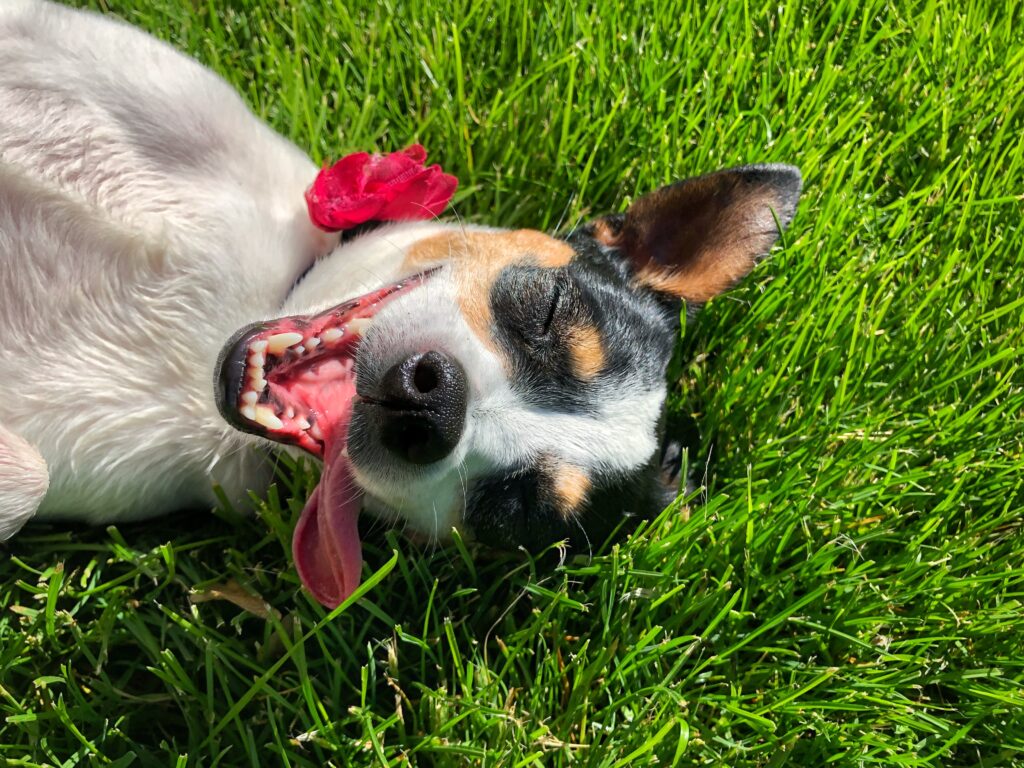Teaching your dog new tricks is not only a fun way to bond with your furry friend, but it also helps to keep their mind sharp and focused. Have you ever wondered how to teach your dog the classic “play dead” trick? Look no further!
In this informative article, we’ll dive into the ins and outs of teaching your dog to play dead, and have them dropping like flies in no time. Are you ready to unleash your dog’s inner actor?
Table of Contents
Why Teach Your Dog to Play Dead
Before we jump into the how-to, let’s explore why you would want to teach your dog to play dead in the first place.
- Mental Stimulation: Just like humans, dogs need mental challenges to keep their minds sharp. Teaching them new tricks is an excellent way to provide this mental stimulation.
- Builds Confidence: Mastering new tricks boosts your dog’s confidence, making them more well-rounded and adaptable to new situations.
- Strengthens Your Bond: Training sessions are a fantastic opportunity for you and your dog to bond and build trust.
- Entertainment Factor: It’s no secret that a dog playing dead is a crowd-pleaser! The trick can be quite entertaining for both you and your audience.
Preparing Your Dog for Training
Before you start teaching your dog to play dead, it’s essential to lay the groundwork for successful training.

Here are a few tips to help you prepare:
- Make sure your dog has a solid foundation in basic obedience training. If your dog doesn’t know basic commands like “sit” and “stay,” check out our article on how to prevent your dog from jumping on guests.
- Find a quiet, distraction-free environment for training. Remember that dog parks can be overwhelming for training sessions, so learn more about dog park etiquette before venturing out.
- Have treats or a favorite toy ready as a reward for your dog’s efforts.
Step-by-Step Guide to Teaching Your Dog to Play Dead
Follow these steps to teach your dog to play dead:
- Start with a “Sit” or “Down” command: Have your dog sit or lie down, whichever position they are most comfortable in.
- Introduce the “Play Dead” command: Choose a command, such as “bang” or “play dead,” and pair it with a hand signal. For example, you could point your finger like a gun while saying “bang.”
- Lure your dog into position: Hold a treat near your dog’s nose and slowly move it towards their shoulder, encouraging them to roll onto their side. Reward them with the treat as soon as they’re in position.
- Add the verbal command and hand signal: Once your dog consistently rolls onto their side, start pairing the action with your chosen command and hand signal.
- Extend the duration: Gradually increase the amount of time your dog stays in the “play dead” position before rewarding them with a treat
- Teach them to “come alive”: Once your dog has mastered the “play dead” position, it’s time to teach them to get up on command. Use a cue like “up” or “rise,” paired with a hand signal, to signal your dog to stand up. Reward them with a treat as soon as they respond to the command.
- Practice, practice, practice: Repetition is the key to mastering any new skill. Be patient and consistent in your training sessions, and remember to always reward your dog for their efforts.
- Gradually fade out the treat: As your dog becomes more proficient at the trick, start reducing the frequency of treats. Eventually, you’ll be able to phase them out entirely, and your dog will still perform the trick on command.
Tips for Effective Training
To ensure a smooth training process, keep these helpful tips in mind:
- Keep sessions short: Dogs have short attention spans, so it’s essential to keep training sessions brief and focused. Aim for 5-10 minute sessions, two or three times a day.
- Be patient and consistent: It may take some time for your dog to understand what you’re asking of them. Stay patient, use clear and consistent cues, and always reward your dog’s progress.
- Use positive reinforcement: Positive reinforcement is key to effective dog training. Reward your dog’s good behavior with treats, praise, or a favorite toy.
- Avoid punishment: Punishing your dog for not understanding a command is counterproductive and can damage your relationship. Instead, focus on reinforcing the desired behavior.
Common Mistakes and How to Avoid Them
To help your dog succeed, be mindful of these common mistakes:
- Expecting instant results: Rome wasn’t built in a day, and your dog won’t master the trick overnight. Be patient and give your dog time to learn at their own pace.
- Inconsistency: Consistency in your commands and hand signals is crucial. Changing the command or hand signal can confuse your dog and hinder their progress.
- Pushing too hard: If your dog becomes frustrated or tired, it’s time to take a break. Training should be fun and enjoyable for both of you.
When to Seek Professional Help
If you’re struggling to teach your dog to play dead or encountering other behavioral issues, it might be time to consult a professional dog trainer. They can offer personalized guidance and help troubleshoot any challenges you’re facing.
Key Takeaway
Teaching your dog to play dead is a fun and engaging way to bond with your canine companion, providing mental stimulation and entertainment. With patience, consistency, and positive reinforcement, your dog will be playing dead like a pro in no time. And who knows?
Maybe they’ll even be the star of the show at your next Fourth of July gathering!


Dennis and Becca, have always shared a passion for man’s best friend. As dog enthusiasts, they put together articles that inform, engage, and captivate fellow dog lovers.